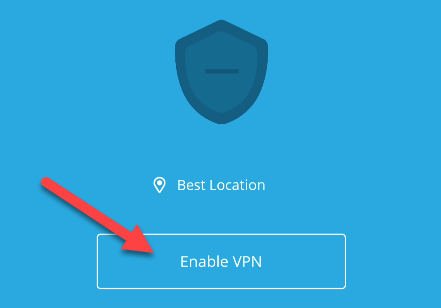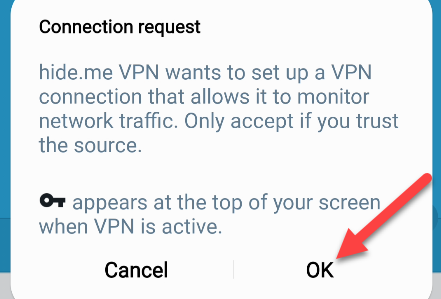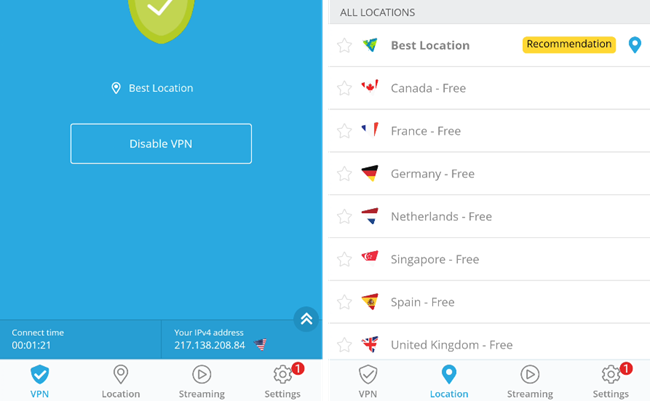
Step-by-Step Guide: Configuring and Accessing a Virtual Private Network (VPN) App on Your Android Device

Step-by-Step Guide: Configuring and Accessing a Virtual Private Network (VPN) App on Your Android Device
Quick Links
- What Is a VPN, and How Does It Work on Android?
- What’s the Best VPN for Android?
- How to Set Up a VPN on Android
- How to Turn Off VPN on Android
So, you’re interested in using a VPN on your Android phone. There are a lot of choices out there when it comes to VPN services. Thankfully, they’re all pretty easy to use. We’ll help you get started.
What Is a VPN, and How Does It Work on Android?
First thing first, let’s talk about what actually happens when you use a VPN . “VPN” stands for “Virtual Private Network,” and that’s a pretty good description of what it does.
A VPN encrypts your device’s internet traffic and sends it through a computer (server) that’s located somewhere else. It’s as if you’re using the internet on that remote device instead of your own. This disguises your identity and makes it appear as if you’re browsing the web from somewhere you’re not. If you use a VPN on your Android phone, all the traffic from all apps on your Android device—including Chrome and other browsers—will be sent through the VPN tunnel.
Related: 5 Things You Should Use a VPN For
There are several reasons why you might want to use a VPN . VPNs are commonly used to bypass regional restrictions. If a movie isn’t available on Netflix in your country, you can use a VPN to watch it . All you have to do is install the VPN and start it up. You’ll be virtually transported to a different location, and your internet activity will be hidden from your internet provider.
What’s the Best VPN for Android?
There are a lot of great VPN apps available for Android. It can be difficult to decide which one is right for you—and to know which ones to trust . We’ve got a guide to help you find the best VPN service , including the best free VPN. All of the VPN services in our guide have Android apps.
How to Set Up a VPN on Android
Every VPN app is going to work a little differently, but the concept is basically the same. We’ll show you how to get Hide.me -–our pick for Best Android VPN -–up and running as an example.
The first thing you’ll need to do with most VPN services is create an account and choose a plan. In the case of Hide.me, we can use the free plan without creating an account.

Next, simply tap the “Enable VPN” button to start it.

You’ll need to grant the VPN permission to monitor network traffic. This is why it’s important to use trustworthy VPN services. Tap “OK” to continue.

You can see the location at the bottom of the screen. In this case, it’s somewhere in the US. The “Location” tab allows you to move to different countries.

When a VPN is running on your Android device, you’ll see a key icon in the status bar.

That’s pretty much it! Again, every VPN app works a little differently, but this is the general idea. You’ll create an account, choose a location, and run the VPN. Sometimes it’s even a good idea to just leave your VPN connected all the time .
How to Turn Off VPN on Android
Turning off a VPN on Android is as easy as turning it on. Simply open the VPN app that you’re using—in our case, it’s Hide.me. Tap the “Disable VPN” (or similar) button.

VPNs aren’t something that everyone needs—in fact, most users will be fine without ever touching one. But if the occasion arises where one is required, it’s good to know how to use one and which ones you can trust .
Related: Should You Trust Your VPN?
Also read:
- Can I recover permanently deleted photos from Tecno Camon 20
- Does Life360 Notify When You Log Out On Samsung Galaxy F34 5G? | Dr.fone
- Extend Your Windows Laptop's Battery Endurance: Expert Tips & Tricks
- Get Your CSR Bluetooth Controller Software Here
- Get Your New Asus VivoBook Pro for a Steal: Up to $300 Off Today at Amazon, Exclusively Covered by ZDNET!
- Identifying & Troubleshooting Auto-Start Problems on Your Windows 11 Computer
- In 2024, Looking For A Location Changer On Poco C51? Look No Further | Dr.fone
- IPad Pro Versus MacBook Air Showdown: Determining Your Perfect Device Choice
- Save Big on Black Friday: Discover the Ultimate Cyber Monday Bargains for 202N, Curated
- Transforming Your PC Experience: Changing the Windows 10 Taskbar Hue
- Как Управлять Разделом Восстановления В Windows: Удаление И Восстановление Вариантов
- Title: Step-by-Step Guide: Configuring and Accessing a Virtual Private Network (VPN) App on Your Android Device
- Author: Joseph
- Created at : 2024-10-27 00:02:04
- Updated at : 2024-10-30 22:34:41
- Link: https://hardware-help.techidaily.com/step-by-step-guide-configuring-and-accessing-a-virtual-private-network-vpn-app-on-your-android-device/
- License: This work is licensed under CC BY-NC-SA 4.0.